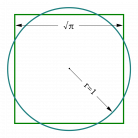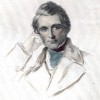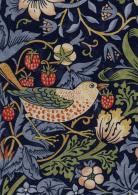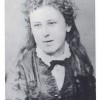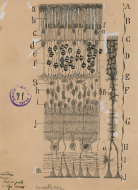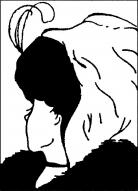Timeline: Perception and aesthetics
Created by LeeAnne Richardson on Thu, 08/27/2020 - 11:59
Part of Group:
This is a collaborative resource for HONS3260: Oscar Wilde: the art of perception
For this timeline, you will research a topic of your choosing (perhaps related your own major) and then select a date that represents an important moment for your research topic. Explain what happened then and why it is significant. Also be sure to explain how it relates to questions of perception or aesthetics.
A few timeline elements have already been added (borrowing from BRANCH). Some BRANCH timeline entries are more extensive than yours will need to be. You should aim for approximately 1000 words.
Timeline
Chronological table
| Date | Event | Created by | Associated Places | |
|---|---|---|---|---|
| 191 |
Vernon Lee, The Beautiful: An Introduction to Psychological AestheticsVernon Lee publishes The Beautiful: An Introduction to Psychological Aesthetics. ArticlesIrena Yamboliev, “Christopher Dresser, Physiological Ornamentist” Related ArticlesMorna O’Neill, “On Walter Crane and the Aims of Decorative Art” Scott C. Thompson, “On G. H. Lewes’s Problems of Life and Mind, 1874—79″ |
Dave Rettenmaier | ||
| 1191 |
Zen art and aesthetic principle: FukinseiZen is a practice that originated from Buddhist tradition with the aims for self-discovery and enlightenment by direct intuition through meditation. The history of Zen can be traced back to Shakya Muni or Buddha that originated from India in the 5th-4th century B.C.E. He transcended the idea of karma and the cycle of birth and rebirth. Later, in around 520 C.E, Bodhidharma, an Indian monk, has transmitted Buddhism’s teachings into China, which then expanded to Japan and other countries in East Asia. Zen’s teachings were extended with Zen art, using artistic creations to develop spiritual insight, truths and highlight their direct meaning into life. Multiple aesthetic principles were also developed as potent routes to spiritual illumination. The Zen art and aesthetic principles were introduced into Japan in 1191 that integrated art and aesthetics along with the diversity of Japanese cultured activities such as poetry, paintings, flower arrangement, and swordsmanship. With the long history of teachings that inspired oral communication, no scholars can record them early. Here, we depended on the classic text “Zen and the Fine Art” by Shin'ichi Hisamatsu in 1971 to identify those principles. One interesting aesthetic Zen principle in his text is Fukinsei, which means asymmetry or irregularity. The values of this principle pointed toward being truer to the natural world, which is unsymmetrical and imperfect. The relevant goal of Fukinsei principle is to highlight “isness” or “suchness” in reality, by accepting one’s nature that inevitably comprised imperfections and irregularities for the ease of mindful living and mental health. Comparing with Western art, which usually linked symmetry to beauty as they represented in ideal architectures and marvel arts, Fukinsei preferred the immediate and free movement of hands that enlighten artist’s characteristics on their artworks. The symbol of this principle is enso (Zen circle) or an incomplete circle in brush painting. When we think of a circle, it is the most symmetrical shape along with the satisfaction of perfection. The incomplete circle represented the existence of asymmetry and imperfection in nature, which still can full of beauty, harmony, and balance of life. The imperfection leads to the variation that attracted and engaged us into the abundances of characteristics for things around us to improve our imagination and perspectives. Linking with the Decay of Lying by Oscar Wilde that we have discussed in class, the Fukinsei principle also has a similar effect in manipulating perspectives to view nature. Art has affected people’s thinking of how to see nature in a certain way. We all see actual things under the impact of art that we have observed before and giving a similar definition to them. Art has affected us psychologically, in which we observe things not based on our sensory experience but by cognitive and intellectual faculties (Burdett). The Zen principle pointed out the imaginative motivation toward perfection in each individual. The symmetrical arts, for example, have influenced generations of architecture and artworks to maintain the ideal perfection of art. People in their lifestyles also intuitively strived for the perfection of beauty. Women in our modern time accessed different medical services to reinforce negative racial and sexualized stereotypes. Along with cosmetic medicines and surgical intervention, their natural bodies were at risk to satisfy their ideal body standard. Fukinsei principle helps people to appreciate the imperfection of things around and themselves to see nature in its naked form. Life is made of random things that are unsymmetrical and imperfect to make up the beauty we have seen daily. As the Picture of Dorian Gray has mentioned, “But beauty, real beauty, end where an intellectual expression begins” the principle embraced the beauty as it is instead of trying to put into standards and limit its expression. We will never be able to see the real beauty and perfection until we understand ourselves and the true imperfect nature of things. The variety in nature contributed to the unlimited beauty that existed in our life. Like art has shaped nature in our perspective, as Wilde has concluded, symmetry and perfection also shaped our intuition for imaginative motivation in daily life and our natural selves. In this case, arts are lies that drive people to identify symmetry and perfection as their motives in life without building their perspective based on the true nature of self and things. The aesthetic Zen principle guided people to accept the asymmetry and imperfection in their perspectives and apply it in living. It helps people find their inner peace throughout their lives and face the truth that is opposite to the lies as art that Wilde described. References Cox, R., 2013. The Zen Arts. Hoboken: Taylor and Francis. Lomas, T., Etcoff, N., Van Gordon, W., Shonin, E., 2017. Zen and the Art of Living Mindfully: The Health-Enhancing Potential of Zen Aesthetics. Journal of Religion and Health, 56(5), pp.1720-1739. Hisamatsu, S. 1971. Zen and the fine arts (G. Tokiwa, Trans.). New York: Kodansha International.
|
Tuyen Tran | ||
| circa. 1415 |
The day Linear Perspective was re-discovered and changed art foreverIn the year 1415, the artist Filippo Brunelleschi discovered, or more honestly, re-discovered a method of architecture that would revolutionize art forever. Linear Perspective allowed art to have depth and appear to be in 3D, allowing portraits and paintings to seem more realistic, a key factor that defined the Renaissance Era. Dimensions in paintings and portraits might seem like casual characteristics to us now, but before Brunelleschi linear perspective was a lost method of art that seemed like having no chance of being rediscovered. It is evidenced in the art before him. Before Brunelleschi’s rediscovery, the Greeks and Romans of ancient times were had discovered a form of linear perspective in their art. One example is Ancient Rome’s Trajan Column. Trajan’s Column was built from slabs of white marble, which then were carved by sculptors to incredible detail. Looking back from today’s perspective, it is hard to fathom how detailed the Romans were in architecture with the “lack of information” available. Trajan’s Column is a textbook example that the Romans had a form of linear perspective in their art, being able to skillfully draw body proportions. The talent it takes it to create a column 100ft tall, while also nailing down an appropriate body proportion, while also considering the time period they were in is mindboggling, to say the least. The Greeks also had a form of linear perspective down as well, evidenced in the painted villas of Pompeii. You can see that the paintings, specifically of the city, use forms of linear perspective to form appropriate dimensions of the landscape. You can tell by the villas how they are drawn right next to or on top of each other, yet the Greeks use linear perspective to display how the villas are actually in separate parts of the city. These examples show that linear perspective was an artistic skill that was being used before the Renaissance. However, during the Middle Ages that artistic skill would become nearly forgotten. A shift took place during the Middle Ages and its artwork. Artists were no more focusing on portraying the world around them in their art, but rather religious figures and events. Most of the art in the Middle Ages were created to reflect and emphasize the Catholic church. Artists began being commissioned to create works depicting Biblical tales and themes for churches. While this art is unique in its own right, architecture as a whole took a step back during this period. One unique perspective of Medieval (Middle Ages) art is its flatness and disproportions to its reality. These characteristics are evidenced in artworks such as Madonna and Child with Saint Jerome and Saint John the Baptist, Codex Aureus of St. Emmeram, and paintings of the poem “Roman de la Rose”. It would seem from an outsider’s perspective that the subject material of Medieval art is just as/if not more important than depicting a realistic portrayal of the event being drawn. This artistic choice would go on for around 1000 years. After 1000 years of this artistic choice, it was clear to artists in Florence that they could not create depth in a painting. A question that seemed to have no current answer kept arising, “How can you make a portrait seem more realistic?” A simple answer to people now, but a huge question that lacked answer, an answer that wasn’t known until Filippo Brunelleschi figured it out. Brunelleschi seemed to observe that with a fixed point of view, parallel lines appear to converge at a single point in the distance. Brunelleschi would then apply a single vanishing point to a canvas, to which all lines on the same plane appear to converge and objects appear smaller as they recede into the distance. He would then use that method to calculate depth. A famous experiment involving Brunelleschi recalls him using mirrors to sketch the Florence baptistry to perspective perfection. Brunelleschi was able to use math to calculate the scale of objects within a painting to make them seem more realistic. Brunelleschi found a way to bridge the gap between math and art. This was a paramount achievement in art and architecture, and soon many other artists were using Brunelleschi's method of perspective to incredible results in their paintings. This method was crucial to Renaissance art, where creating an accurate illusion of space could seem natural and then be applied to the human body. In many pieces of Renaissance art, Brunelleschi’s method is used. Some examples of linear perspective in Renaissance Art are The Ideal City of Urbino, The Hunters in the Snow, The Tower of Babel, and The Arnolfini Portrait. These portraits show linear perspective in all its awesomeness from the dimensions of the city to the realistic proportions of the human body to its surroundings. You can see the drastic change from the flatness of Medieval art to the realistic paintings of Renaissance Era art. Brunelleschi’s ideas became widespread knowledge after fellow Renaissance architect Leon Battista Alberti published them in his book, On Painting. The use of linear perspective has changed our perspective of how we see art and this aesthetic of it, forever. Renaissance art allowed viewers to see art depicted in a way it hasn’t been before, realistic. The use of linear perspective rapidly became and still is standard studio art practice today. The aesthetic that linear perspective brought to art revolutionized it in a way that hasn’t been changed since. Sources: “BRUNELLESCHI and the Re-Discovery of Linear Perspective.” MaItaly, 28 Feb. 2018, maitaly.wordpress.com/2011/04/28/brunelleschi-and-the-re-discovery-of-linear-perspective/. says:, Cheryl Ernest. “Brunelleschi 'Rediscovers' Linear Perspective.” Drawing Academy, 26 Sept. 2018, drawingacademy.com/brunelleschi-rediscovers-linear-perspective. Blumberg, Naomi. “Linear Perspective.” Encyclopædia Britannica, Encyclopædia Britannica, Inc., 31 Jan. 2020, www.britannica.com/art/linear-perspective. “Filippo Brunelleschi.” Wikipedia, Wikimedia Foundation, 29 Sept. 2020, en.wikipedia.org/wiki/Filippo_Brunelleschi. Tribe, Yugen, et al. “8 Renaissance Artists Whose Work Transformed the Art World.” My Modern Met, 8 Sept. 2020, mymodernmet.com/renaissance-artists/. “Introduction to the Middle Ages | Art History (Article).” Khan Academy, Khan Academy, www.khanacademy.org/humanities/ap-art-history/early-europe-and-colonial-.... “Medieval Art: Characteristics and Influences.” Invaluable, 26 June 2019, www.invaluable.com/blog/medieval-art/. “Trajan's Column.” MaItaly, 28 Feb. 2011, maitaly.wordpress.com/2011/02/28/trajans-column/. |
Shem Louis | ||
| 1481 |
Linear PerspectiveDuring the Renaissance in Italy, artist and architects sought to understand how to more accurately portray three dimensional objects in a flat plane. This led to the development of linear perspective, a system of creating the illusion of depth through the use of lines that converge at a single vanishing point on the horizon line. As an apprentice in Andrea del Verrocchio’s studio, Leonardo was introduced to the rules of perspective through De Pictura, a treatise on perspective written by the Italian architect Leon Battista Alberti in 1435. One of the clearest uses of linear perspective in Renaissance art is seen in da Vinci’s perspectival study for The Adoration of the Magi. This piece reflects da Vinci’s approach to creating a three-dimensional space on a flat plan and demonstrates his mastery of linear perspective. Sources Blumberg, Naomi. “Linear Perspective.” Encyclopedia Britannica, Encyclopedia Britannica, Inc. , 17 Mar. 2016, www.britannica.com/art/linear-perspective. “Da Vinci - The Artist: A True Master of His Craft.” Museum of Science, Museum of Science, Boston, 2018, www.mos.org/leonardo/artist. Image Retrieved from Wikimedia Commons, fair use |
Lauren Krieger | ||
| 1498 to 1653 |
The affect of the St. Thomas Christians after the arrival of the Portuguese in IndiaIn “The Decay of Lying,” Wilde mentions, “Truth is entirely and absolutely a matter of style.” I believe the same thing can be said for perception. When people think of the religion of Christianity, there is a preconceive notion that it is a “white mans” religion. However, this is not the case. Jesus, the founder of Christianity started in the region of Galilee around 33Ad, and from there it became the largest religion practiced in the world today. Before Christianity flourished in Western Europe and the Americas, it had strong roots in the Middle East, Africa, Eastern Europe, and even India. In this Build Assignment I want to focus on Christianity in India. When people think of Christianity in India, they may assume that the Portuguese, the British, and/or the other colonial empire may have brought it. However, that is not the case at all. Surprisingly, India had one of the earliest Christian communities in the world, and they were known as the St. Thomas Christians. The St. Thomas Christians trace their faith from Thomas the Apostle who brought Christianity to Kerala, India in the year 52 AD. Therefore, Christianity was in India before it reached parts Europe. Today there is a debate among historians whether or not the Apostle Thomas had come to Kerala, India. However, St. Thomas Christians continue to claim that Christianity was brought to India by Thomas the Apostle. A group within the Saint Thomas Christians known as the Knanaya Catholics preserved the history of St. Thomas in India through oral history known as Margramkali. The Magramkali mentions the arrival of Thomas the Apostle in India, how he preached, and his martyrdom. There are references of Thomas’ arrival in India from the Church Fathers. Saint Jerome mentions in Epistles of St. Jerome: "Jesus dwelt in all places; with Thomas in India, with Peter in Rome, with Paul in Illyricum, with Titus in Crete with Andrew in Achaia, with each apostolic man in each and all countries.”[1] The St. Thomas Christians formed a unique identity because they were “Hindu in culture. ” Dr. John mentions, “The Malabar Christian community has assimilated many of the indigenous social customs. Social customs of the Malabar Syrian Christians were very much indigenous, in the sense that they have also manifested itself in church architecture, the ecclesiastical paintings, murals and church music.” [2] Although the St. Thomas Christians had their distinct identity, they were under the authority of the Church of the East. Dr. McKee mentions, “[The St. Thomas Christian] represented truly Indian expression of Christianity. Nevertheless, there was dependence on the East Syrian Church for theology, liturgy and bishops.”[3] In the Fifteenth century, the arrival of Vasco da Gama and the Portuguese changed the fate of the St. Thomas Christians. Initially, the Portuguese were pleased when they found out that there was a Christian community in Kerala India; however, as they settled this changed over time. The Saint Thomas Christians were under the jurisdiction of the Church of the East; the Church of the East is associated with the Nestorian heresy. Therefore, the Portuguese condemned the St. Thomas Christians as heretics. Dr. Ancy mentions, “From the beginning the Portuguese noticed that the St. Thomas Christians were different from them in anything ecclesiastical, ritual or theological and in rite, customs and hierarchical allegiance. The official attitude of the Portuguese towards the Christians of St. Thomas was one of the Sympathy and understanding but always motivated by a sense of superiority about their form of Christianity, according to the Portuguese version, their rites and customs was the true form to which all Christians had to conform in order to become perfect Christians.” [4] Even though the Saint Thomas Christians were an early Christian community with unique and rich traditions, the Portuguese still attempted to compel them to practice the Latin liturgy and to submit to the judication of Rome. Dr. Kochuparampil mention in this book, “As the Portuguese missionaries who were very friendly with the Thomas Christians, they wanted them to conform to latin customs, there arose tension between the two communities. The Portuguese could intensify the process of latinization by the end of the sixteenth century through the Council of Goa held in 1585.”[5] The 1599 Synod of Diamper condemned the Catholicos of Chaldea (Patriarch of the Church of the East) and all Saint Thomas Christians who would not submit to Rome. Many clerics were imprisoned, ancient churches were destroyed, and books and documents were burned. A few of the Saint Thomas Christians also did not agree with the decrees that were produced during the Synod. As a result, some of the Saint Thomas Christians resisted the Portuguese oppression. On January 3, 1653, a group of Saint Thomas Christians publicly swore that they would not submit to Rome. This was known as the Coonan Cross Oath. As a result of the Synod of Diamper and the Coonan Cross Oath, the once unified Saint Thomas Christians split into being Catholic (Latin rite and Easrtern rites) and Othrodox. . [1] Jerome, ., & Wright, F. A. (1975). Select letters of St. Jerome. Cambridge, Mass: Harvard University Press. [2] Johny, P. (2000). THE OATH OF THE 'COONAN CROSS' (LEANING CROSS), MATTANCHERRY, COCHIN, JANUARY 16, 1653 A.D. — ITS SOCIO-POLITICAL BACKGROUND. Proceedings of the Indian History Congress, 61, 453-460. Retrieved March 30, 2020, from www.jstor.org/stable/44148123 [3] McKee, G. (2018). Benjamin Bailey and the Call for the Conversion of an Ancient Christian Church in India. Studies in World Christianity, 24(2), 114–134. https://doi.org/10.3366/swc.2018.0216 [4] Ancy, M. (2012). CIRCUMSTANCES THAT LED TO THE SYNOD OF DIAMPER. Proceedings of the Indian History Congress [5] Kochuparampil, X. (1996). The St Thomas Christians of India: Ecumenical and Missiological Challenges. Exchange, 25(3), 243–260. |
Jerry Thomas | ||
| circa. 1505 |
Renaissance Painting TechniquesThe Renaissance brought about a new tradition in the field of art. Artists sought to achieve a greater sense of realism and naturalism in their paintings, as opposed to the rigid and stylized characteristics of the preceding medieval and byzantine periods. Artists were aided in achieving this goal in part through the development of oil paint, which in turn gave rise to the development of new painting techniques. The most important techniques that were established during the renaissance were sfumato, chiaroscuro, perspective, foreshortening and proportion. The advent of these techniques marked a significant shift in art history. Sfumato, a term coined by Leonardo da Vinci, refers to the subtle blending of colors and the blurring of sharp lines. Chiaroscuro is the use of strong contrast between light and dark to create depth. Perspective, foreshortening and proportion all relate to the use of mathematical principles to establish lines used to create the illusion of depth. Used in combination, these techniques greatly contributed to an artist’s ability to create three dimensional figures on a two-dimensional plane.
Sources Gombrich, E. H. Art and Illusion: A Study in the Psychology of Pictorial Representation. Princeton University Press, 1960. Wikipedia, the free encyclopedia. “Renaissance Art.” Wikipedia, Wikimedia Foundation, Inc. , 6 Mar. 2018, en.wikipedia.org/wiki/Renaissance_art#Techniques. Image Retrieved from Wikimedia Commons, fair use
|
Lauren Krieger | ||
| 1505 to 1505 |
da Vinci states his intention to write a book on the transformations of geometric shapesAs an artist, da Vinci’s interest in geometry was rooted in the subject's application to aesthetics. It is for this reason that da Vinci was more invested in learning the “continuous” mathematics of shape as opposed to the “discrete” math of arithmetic. Since da Vinci viewed shapes as continuous, he found himself especially interested in the transformations of one shape to another. One can find evidence of this interest in da Vinci’s sketches of elevated polyhedra, where a polyhedron essentially explodes into another one. da Vinci also explored this idea of transformation in the plane through the task of squaring the circle, which is the task of creating a square with the same area as a given circle. His notebooks show a fixation with the task, eventually displaying 169 ways to do the procedure. In 1505 da Vinci set out to make a publication on the transformation of shapes; unfortunately, this publication never came to fruition, but this idea remained an obsession of him throughout the rest of his life. Source Isaacson, Walter. Leonardo Da Vinci. Simon & Schuster Paperbacks, 2018. The image is from Wikimedia Commons and in the public domain. |
Garrett Mulcahy | ||
| Jun 1609 |
Galileo's Early TelescopeIn Venice, Galileo learns of the "Dutch perspective glass", at the time the name for the telescope, and it's ability to make distant objects look larger. He immediately invented his first telescope despite having never seen one before and only having access to basic descriptions of Hans Lippershey's design. Galileo claims to have created his first telescope the day after hearing of the device. He then spent several days improving it. He went on to present this design to the public and doge Leonardo Donato. As a result, he was settled into his lectureship at Padua and had his salary doubled. The image below is a painting by H. J. Detouche and is of Galileo presenting his telescope to the doge. It is from Wikimedia commons and is public domain. |
Catriona White | ||
| 1829 |
The London Metropolitan Police DepartmentThe first police department in Britain was the London Metropolitan Police Department which had been established by the Metropolitan Police Act in 1829. This police department was established by a British politician named Sir Robert Peel, and he outlined the nine policing principles which have heavily influenced police departments across the world since its development. Sir Rober Peel came to be known as the “Father of Modern Policing,” and the three core principles he developed were that the goal of the police is to prevent crime, earning public support and approval is the key to preventing crime, and the police earn support from the public by respecting the principles of the community. The Metropolitan Police Act officially established the principles of the police force, including that the officers should be uniformed, the structure of the police force will have a centralized, military-like structure, and the authority of the police should come from the crown. This police department had a hierarchical structure of ranks that was based on that of the military’s, and this structure has continued on even to today. The first common officers, the constables or “bobbies” as they were nicknamed, were unarmed (or lightly armed) and did not have a lot of authority. This London Metropolitan Police Department was intended, as Sir Robert Peel intended, to have close ties to the community, and it was established for the purpose of crime prevention. While the principles of the police force were important, so too was the design of the police themselves. It was important that the police were easily distinguished from the military given the distinct roles they have. The color of the uniforms of the London Metropolitan Police Department were blue, the same as many police departments and forces today. This color was chosen by Robert Peel to help to differentiate the police force from the British military which wore red. This connection is particularly interesting as the police uniforms in the United States in its first police departments were also largely blue, but this was partially due to the police using surplus uniforms from the Union Army during the Civil War as well as the influence from Britain. The police departments’ uniforms were designed and worn so that officers could be easily recognized, and this is why they have an insignia indicating their department as well as badges with ID numbers to add an element of accountability. The difference in the distinction between the first London officers and the military versus the lack of distinction between the first police officers in the United States may be more important than it initially seems. While the police were designed to have a specific, distinctive role from the military, the overall design of the uniforms of the police and the military were very similar. In addition, the structure of the police departments was based on the structure of the military. This is an important connection to point out given the significant difference between the roles of the police versus the military, and it has been an important distinction from the first police department up to today. The military was and is meant to protect its country’s citizens and fight against foreign powers and combatants. The police, on the other hand, are meant to prevent/react to crime and serve the citizens of their jurisdiction. The military engage with enemy combatants in order to maintain peace and be successful while the police engage with citizens. This distinction is key, and it has a huge role to play in the public’s perception of the police as a whole. It is important for the police to be able to view themselves as being on the same “side” as the public, and it is important for the public to view it this way as well. While the behavior and actions taken by the police has a major role to play, so too does the presentation of the police themselves. It is important for the police to look like protectors and crime preventers rather than like soldiers as they serve a different role than the military. This was readily apparent, as was previously stated, in London where the police wore a distinct color from the military and were largely unarmed or lightly armed. The influence of the London Metropolitan Police Department is apparent still today. The policies, design, and structure was adopted by various major cities in the United States such as Boston, New York, and Los Angeles, and the influence carried on through the more than 12,000 local police departments that exist in the United States today. Many other countries have modeled their police departments after this original structure and design as well, and the influence of Sir Robert Peel and his policies will continue to be felt. The public’s overall perception of the police is largely determined by the appearance of the police and their uniforms, and the design and function of the police uniform can be linked back to the London Metropolitan Police Department. References: Anderson, P. (2020, July 04). The Roots and Perception of Police Uniforms. Retrieved October 12, 2020, from https://putthison.com/the-roots-and-perception-of-police-uniforms/ Banton, M., & Kelling, G. (2020, September 01). The development of professional policing in England. Retrieved from https://www.britannica.com/topic/police/The-development-of-professional-policing-in-England Bureau of Justice Statistics Home page. (n.d.). Retrieved October 12, 2020, from https://www.bjs.gov/index.cfm?tid=71 Sir Robert Peel's Policing Principles. (2017, February 21). Retrieved October 12, 2020, from https://lawenforcementactionpartnership.org/peel-policing-principles/ Vaughn, C. (2018, June 06). [Digital image]. Retrieved from https://medium.com/@vaughncj02/the-foundation-opposition-and-the-eventual-formation-of-the-british-police-force-43c91e1be88d |
Patrick Allomong | ||
| 1849 to 1850 |
Gustave Courbet on " History Paintings"Gustave Courbet, born June 10, 1819, in Ornans, was a famous French painter and leader of the Realist movement. He led a revolution where the everyday life events were the focus of his paintings rather than idolizing an unreal world and using that as the basis of beauty. His two paintings that began the revolution of Romanticism into Realism were A Burial at Ornans and The Stone Breakers, both exhibited at the same Salon in 1850-51. A Burial of Ornans was the beginning of Courbet's manifesto. Large paintings were supposed to be historical, heroic, symbolic, or religious. But this is a genre painting of everyday life. According to the rules of the Academy, it had no business being on a canvas this large. Lifestyle paintings were on small canvasses, whereas historical paintings were on big ones. That was the rule. But here in his painting, we have an ordinary funeral, a group of typical figures, and a regular place. Courbet submitted it to the jury as a history painting, which is true in our world today but was not a historic moment at the time of submission. This painting portrays his great-uncle's funeral. The figures seen in the painting are individual portraits, many of them members of Courbet's family. To be accepted by the jury of the Salon and hung in official exhibitions As drawn out by the Academy, historical paintings showed the same subjects from ancient Greek and Roman history, mythology, and religious subjects. Courbet wanted to paint what he saw in his world. He paints the world he knows, the world he grew up in. He did not conform to what society saw as beautiful. After the Revolution of 1848, which ushered in the second republic, artists began turning to figures of laborers or ordinary workers and portrayed them in an ennobled and heroic manner. Courbet's Burial at Ornans differs from traditional paintings destined for the Salon because of the figures' lack of interaction. According to the Royal Academy of Fine Art's rules, the figures should interact; they should have readable gestures and can tell a story. There are, however, a few references to the history of painting. The skull at the edge of the grave references the skull at the cross's base and the crucifixion sculpture. Courbet does not let the historic references overshadow the point he is making with this painting. Courbet says, "painting is essentially a concrete art and can only consist of the representation of real and existing things. It is a completely physical language, the words of which consist of all visible objects. An object which is abstract, not physical, non-existent, is not within the realm of painting." This is why he turned his back on Romanticism and embraced the real nature of things in the world. According to an article on The Art Story, Courbet stated that "A Burial at Ornans was, in reality, the burial of Romanticism." As learned from our previous class sessions, Oscar Wilde did not regard Realism as art. This is because Realism gives no room for exaggeration or lie. In "The Decay of Lying," Wilde states that artists need to lie more often and better than make their art copy life. Realism is about the depiction of reality or the real world, which disagrees with Wilde's theory. Hence Courbet is not perceived as an artist by Wilde, and neither is Realism seen as art. Wilde argues more for Romanticism and debunks Realism.
Famous quote by Courbet, "Show me an angel, and I'll paint one."
References: "A Burial at Ornans - Gustave Courbet - Google Arts & Culture." Google, Google, artsandculture.google.com/asset/a-burial-at-ornans/jwESwQ4qvb87oQ?hl=en. Fernier, Robert J. "Political Activities." Encyclopædia Britannica, Encyclopædia Britannica, Inc., June 6, 2020, www.britannica.com/biography/Gustave-Courbet/Political-activities. “Gustave Courbet Paintings.” Metmuseum.org, www.metmuseum.org/art/collection/search/438820?searchField=All. "A Movement in a Moment: Realism." Phaidon, www.phaidon.com/agenda/art/articles/2015/june/10/a-movement-in-a-moment-.... "Realism - Important Paintings." The Art Story, www.theartstory.org/movement/realism/artworks/. Wilde, Oscar. The Decay of Lying. www.victorianweb.org/authors/wilde/decay.html. |
Efua Egya-Mensah | ||
| circa. 1850 |
The role of Perception in PhotojournalismPhotojournalism is one of the best techniques used to tell stories. While it's been around since the 1850s and was mostly used during wars amongst countries, whenever I think of images that tell a story, the image of Florence Owens Thompson by Dorethea Lange instantly comes to mind. This image tells the story of the hardships faced by many citizens during the great depression. The emotions that the image evoked were felt by just about anyone that saw it and Thompson was later dubbed "The face of the great depression". This brings me to question what is it about Photojournalism that makes it so impactful? To further expand, what does the common way in which we perceive images in media say about us as humans? When it comes to images, the human eye tends to wander all over the picture. This is the process we all go through to try and understand exactly what it is we’re seeing. Photojournalists tell stories with their images so It’s normal to search for some understanding in the pictures. Humans pick up on cues such as facial expressions, body language, and even the angle of the image to decipher their meaning. This is also a normal part of the process. The way in we which perceive images in media is something many researchers are trying to gain a more concrete understanding to this day. Although peculiar what It comes down to is the framing of the image. Framing is how media outlets shape mass opinion. Agenda-Setting is similar but deals with repeated exposure to messages. Journalists use both of these techniques to their benefit when telling their stories. We’ve all been subject to these techniques even realizing it. Unless you have an understanding of social science and the way the media works, Agenda-Setting, and Framing can be hard to detect. The results show from the use of both techniques leads me to believe that humans are more easily influenced than one may think. Photojournalism uses these techniques and has shaped how people see many issues. Ranging from social issues to fashion. Thanks to the camera, journalists have the ability to push for social change and influence society all through their images. This image I chose is called "Migrant Mother" by Dorothea Lange. This photo is one of many in a series and is one of the best examples of modern photojournalism. It was taken in March of 1936 in Nipomo California during the great depression. Aside from what the Image makes us feel, the Story behind the image is about a mother of 7 that was living in a tent on a camp for Migrant farmworkers. This image was not only a powerful tool to show the world the conditions in America but for journalists today, it shows the real power of Photojournalism. With the arms of her kids wrapped around her, we see a mother who appears to be disheveled with a worried look on her face. Just by looking at the image, it is no doubt that we as people instantly feel concerned and want to know the context of the image. The candid and authentic aesthetic of the image is what makes it so powerful. The subject of the image is a real person with a real and relatable story. The impact of this image can still be seen today. Many other powerful images are taken by photojournalists still follow this same aesthetic of authenticness today. Many even still shoot images in black and white because of the way we as an audience perceive it. Along with its timeless element, Images of black and white emphasize emotion and subtly forces viewers to pay attention to details as a society, images like this have shaped the way we perceive America's history. There may have been thousands of other stories like this during the time, but impactful images like "migrant mother" visually put things into perspective when discussing historic events.
Sources Rosenblum, Naomi. A World History of Photography. Abbeville Press Publishers. 1997. 695 pages. Collins, Ross. “A Brief History of Photography and Photojournalism.” History of Photography and Photojournalism., 2019, www.ndsu.edu/pubweb/~rcollins/242photojournalism/historyofphotography.html. Lange, Dorothea. Migrant Mother. New York City, www.moma.org/learn/moma_learning/dorothea-lange-migrant-mother-nipomo-ca.... Accessed 7 Oct. 2020. |
Jahmani Taylor | ||
| 1 Jan 1853 |
Stones of Venice, vol. 2
ArticlesAmy Woodson-Boulton, “The City Art Museum Movement and the Social Role of Art” Related Articles |
Dave Rettenmaier | ||
| 1 Jan 1856 |
Modern Painters, vol. 3
ArticlesAmy Woodson-Boulton, “The City Art Museum Movement and the Social Role of Art” Related Articles |
Dave Rettenmaier | ||
| 1862 |
Christopher Dresser, The Art of Decorative Design
Image: Plate II from Dresser, The Art of Decorative Design (1862). Courtesy of the Department of Special Collections, Stanford University Libraries. ArticlesIrena Yamboliev, “Christopher Dresser, Physiological Ornamentist” Related ArticlesMorna O’Neill, “On Walter Crane and the Aims of Decorative Art” Wendy S. Williams, "‘Free-and-Easy,’ ‘Japaneasy’: British Perceptions and the 1885 Japanese Village" Siobhan Carroll, "On Erasmus Darwin’s The Botanic Garden, 1791-1792" |
Dave Rettenmaier | ||
| 1 Jan 1873 |
"On the Optical Sense of Form"Published as Über das optische Formgefühl: Ein Beitrag zur Aesthetik (Leipzig: Herrmann Credner), Robert Vischer’s doctoral dissertation, “On the Optical Sense of Form: A Contribution to Aesthetics,” marks the first use of Einfühlung as a noun. Exact month of publication unknown; if you have information about the correct date, please email felluga@purdue.edu with this information. ArticlesRae Greiner, “1909: The Introduction of the Word ‘Empathy’ into English” Related Articles |
Dave Rettenmaier | ||
| 1880 |
William Morris and the Arts & Crafts Movement in the 1880s
William Morris William Morris was a 19th century socialist, writer, artist, designer and craftsman. Almost 150 years after founding his firm in 1875, Morris & Co., his tapestries, wallpapers, fabrics for furniture and home decor still influence the world of design. Born in 1834 in Essex, England, into a wealthy family, he was one of nine children who survived to adulthood which is noteworthy for the early 1800s. His childhood is described as idyllic with time spent reading and wandering the surrounding area which was filled with medieval architecture. In his later school years, he trained as an architect after switching from theology studies. The medieval churches left a deep impression on him and his early work included stained glass windows. Around 1880, the Arts & Craft movement was born as a reaction to what designers believed to be a degradation of fine workmanship in home decoration caused by the mechanization of the industrialized society. More emphasis was now placed on doing a job piecemeal -- in steps by many people --- rather than by one person working as a craftsperson. Morris became the leading figure in this movement. Before this took place, Morris’s life went through upheaval. He and his family lived at Red House, a red brick manor that architect Philip Webb designed. It was an Arts & Crafts masterpiece with sloping gabled roofs and a cottage garden. To this day, some of the wallpaper that Morris designed is still in the house. The Red House became a country get-away for Morris’s artistic friends. One of Morris’s friends, Dante Rossetti, became entangled in an affair with Morris’s wife, Jane, and the marriage began to disintegrate. The family moved from the Red House to Oxfordshire in 1865 as his personal finances were also sinking. Inexplicably, he invited Rossetti to come live with the family. One cannot imagine how Morris thought this would work in the long run and it didn’t; Rossetti finally left in 1874. Morris found comfort in verse and became one of England’s most famous poets in the 1860s with many of his poems having medieval themes. By the next year, his own firm was founded. Morris mastered the art of woodblock prints and applied this technique to paper and fabric. His fabric design illustrates his interest in medieval textiles such as the Cluny tapestries. The foliage and birds captured his imagination. As he mastered the techniques from the past for his dyeing and printing, he also became interested in the preservation of historical buildings, eschewing modern methods. He co-founded The Society for the Protection of Ancient Buildings which is still in existence today. The Society believes in repairing old buildings, not restoring them to modern standards. William Morris had strong socialist views. He believed that art should be not only enjoyed by all socioeconomic classes of society but available to all people. His legacy was wide ranging and long lasting to this day. The Arts & Crafts movement spread to North America and to France where Art Nouveau began. It was not defined as a particular style but rather beauty and function into the design of whatever was used for the home. William Morris died in 1896 but Morris & Co. continued to trade until 1940. The firm was dissolved in the early months of WWII, no doubt due to the stress of the London Blitz when home decor and furnishings were not at the forefront of the needs of the people However, the licenses for the designs are owned by several companies; the most well known to Americans is Liberty of London who own the license for fabric design. Toward the end of his life, Morris began a private press in his Kelmscott home, dedicated to Arts & Crafts books. At his death, an ardent admirer and friend, Laurence Hodson, bought the entire collection of Morris’s library and it stayed intact within Hodson’s family for over 100 years. Hodson died in 1933. Recently, the family decided to put the entire collection up for auction. The Bloomsbury Auctions consultant found in a box at the back of the cupboard a draft of an early sonnet by Oscar Wilde and also letters from him offering advice about being a writer. The sonnet was written to Bosie, Lord Alfred Douglas. Young, Graham. “Wilde Surprises at Heart of a Spellbinding William Morris Treasure Trove.” BusinessLive, 2 April 2013, https://www.business-live.co.uk/retail-consumer/wilde-surprises-heart-sp... |
Elizabeth Bracken | ||
| 1 Jan 1897 |
Spatial Aesthetics and Optical IllusionPublished as Raumaesthetik und geometrisch-optische Täushungen (Leipzig: Barth), Theodor Lipps’s study of geometrical-optical phenomena, Spatial Aesthetics and Optical Illusion, explores the mental processes involved in aesthetic experience. Reviewed by S. Alexander in the British journal Mind 8 (1899): 84-91. Exact month of publication unknown; if you have information about the correct date, please email felluga@purdue.edu with this information. ArticlesRae Greiner, “1909: The Introduction of the Word ‘Empathy’ into English” Related Articles |
Dave Rettenmaier | ||
| Oct 1897 to Nov 1897 |
"Beauty and Ugliness"
ArticlesRae Greiner, “1909: The Introduction of the Word ‘Empathy’ into English” Related Articles |
Dave Rettenmaier | ||
| 1906 to 1906 |
The Nobel prize in Physiology or Medicine awarded: Santiago Ramon Y Cajal (and Camillo Golgi)In this year, Santiago Ramon Y Cajal, with his academic rival Camillo Golgi, for their work on the structure of the nervous system (the neuron doctrine), won the Nobel prize in Physiology or Medicine. In the late 1880s, Camillo Golgi, a leading neuroscientist, had recently popularized the use of "Golgi stain" amongst rising neuroscientists. Golgi had developed the stain when he realized that dousing a section (i.e., thin slice ~1 mm) of the brain in silver chromate (Ag2CrO4) formed these novel formations that were later identified to be complete neurons. What made the stain so unique and popular was, unlike any other stain at the time, one could see once they used the Golgi stain. The stain makes a random small percentage of all neurons become extremely dark. Interestingly enough, today, neuroscientists are still trying to figure the molecular mechanisms behind this stain and why this makes a random collection of neurons so easily visible, while leaving the rest completely untouched and transparent. Because of such characteristics, the stain reveals all of the dark neurons' connections and its novel and complete morphology, which was unknown before then. Another competing stain used at the time was the nissl stain. This stain would color a region of all the neurons (the area mainly around the nucleus) and was not useful in shedding light on the true nature and connectivity of neurons; despite this, it is still used occasionally today for alternate reasons. Although it was Golgi who synthesized this staining technique, it was remarkable when the young Spanish painter, histologist, and rising neuroscientist took this stain to the next level. This was done over 25 years of morphological and anatomical studies of the cellular level of the nervous system. Ramon Y Cajal had stained virtually the entire nervous system of a variety of species, ranging from sections of brains of breeds of local fish to cross-sections of the human retina. The most influential piece of all his publications were his illustrations of these complex neuroanatomical formations. These illustrations were used as "scientific standard" amongst many neuroscientists at the time and were critical in the advancement of neuroscience in the early 1900s. Through these series of findings and studies, Ramon Y Cajal and Golgi had solidified our understanding of the nervous system and had developed competing theories as rivals. Golgi believed in the Reticular theory, which states that the nervous system is made up of one continuous formation of nerve tissue. At the same time, Ramon Y Cajal argued that neurons communicated by contact and not by continuity- the Synaptic theory. Regardless of their rivalry on the connectivity, or lack thereof, in the nervous system, both scientists were strong proponents for the application of cell theory to the nervous system. Cell theory states that the body and all systems of the body are made up of small units of organization known as the cell. Its application in the nervous system thereby indicated the nervous system must be made up of cells, too. This theory was later dubbed as the neuron doctrine, and consequently, Ramon Y Cajal as the father of the neuron doctrine. As for the matter of Aesthetics, the beauty and significance of this year is unique and comes in many forms, the first being winning one of the highest scientific achievements, the Nobel prize, with Golgi, an esteemed colleague who happens to be a rival. Following this contesting rival was the creator of the technique that leads to Ramon Y Cajal's findings. The next significant moment is when using the same evidence, these two profound academics had come to inherently differing conclusions.After some scientific debate, another defining moment is when these two academics agree on something and collectively construct the neuron doctrine. The last layer and, quite honestly the most humorous, is that all of their theories (the Reticular theory, the Synaptic theory, and the neuron doctrine) being proven false using the electron microscope from 1950. This interlayered form of scientific and historical comedy is something unique and unprecedented and almost reads like a play from Oscar Wilde. It shows an ambiguous case of aesthetics in the personality traits of these academics and their respective role in the society of neuroscience in their time. Another form of Aesthetics is more traditionally shown in the artistry of Ramon Y Cajal. His most influential illustration was a painting of the cross-section of the retina; it was publicized most often from his "Die Retina der Wirbelthiere: Untersuchungen mit der Golgi-cajal' schen Chromsilbermethode und der ehrlich' schen Methylenblaufärbung." originally published in German. His work here was classically aesthetic in its beauty and hence was used to market textbooks and scientific articles. This illustration holds scientific accuracy to the highest regard, and many textbooks today have used diagrams that are virtually identical to educate today's generation. It is quite unique to observe his work and realize the meta-aestheticism it poses. It shows the beauty in one's own body at the cellular level, especially of that system that is used to observe the world around it. It is almost like looking into a mirror, into your own eyes, and realizing that this is who you are, and those are the eyes you see the image in front of you with. Although a majority of his works were used strictly for scientific purposes in his time, today, I see peers of my own studying neuroscience, inspired by these illustrations and tattoo these illustrations on to themselves. These tattoos almost act like a mark to confine them to the pursuit of understanding a very strict and harsh science with such grace and elegance, much like the beauty of the paintings of Ramon Y Cajal. Citations Bear, M. F., Connors, B. W., & Paradiso, M. A. (2020). Neuroscience: Exploring the brain. Burlington, MA, PA: Jones & Bartlett Learning. Cajal, S. R. (1894). Die Retina der Wirbelthiere: Untersuchungen mit der Golgi-Cajalschen Chromsilbermethode und der Ehrlichschen Methylenblaufárbung. Wiesbaden: Bergmann. Smith, R. (2018, January 18). A Deep Dive Into the Brain, Hand-Drawn by the Father of Neuroscience. Retrieved September 30, 2020, from https://www.nytimes.com/2018/01/18/arts/design/brain-neuroscience-santia... |
Karan Sharma | ||
| circa. 1910 to circa. 1990 |
Collectivism in the 20th CenturyDuring the 20th century, collectivism as a theory was starting to be expressed through many forms such as literature, media, novels, etc. However, one of the most notable expressions of collectivism is through politics and government. In addition to many of the degrees of expression, the 20th century played a huge significance in observing the collectivism Inaction and how its practical implications differ from its theoretical implications--- specifically in the context of communists nations who have employed this practice. Collectivism is the practice, art, and/or principle in which the foundational principle is that people should value and behave with the interest of the collective (country and its citizens) over individual interests. Collectivism usually runs alongside conformity. In theory, collectivism runs counter to the concept of individualism in which people should value and behave in the interest of themselves firsthand. America, as well as many other nations, are traditionally founded on democratic principles which are commonly formed on the basis of Individuality and individual rights and liberties. This is seen with such principles such as the bill of rights which protects the basis of individual rights that the government ( state) cannot be impeded. On the other hand, collectivism is more commonly associated with communism/ can be seen more from communist societies (where depending on the leader, they stress compliance to laws in order to benefit the entire collective i.e. country). The entire 20th century was significant in part that communism (and communist forms of government) became one of the key forms of government and philosophy alongside democracy. The 20th century was characterized by an increased presence of communist government with a lot of the areas within Europe and Asia adopting the ideology. In fact, America spent most of the decade trying to contain the spread of communism. It was also in this century that we were shown how the idea and actions of collectivism are promoted, used, and foster negative impacts by prominent communists and fascist dictators of the 20th century. Leaders such as Vladimir Lenin of Russia, Adolf Hitler of Germany, and Charman Mao Zedong of China are all examples of leaders who have used the collectivist ideology to advance their own political philosophies, power, and control which then results in atrocities on its own citizens and dissidents in protecting the “state of the country.” For example, Bolshevik Russia and Mao China have both committed mass executions and persecutions to any indications of non-conforming thought and to maintain collective adherence. The 20th century helped show the negative connotations to that collectivism seemed to not present based solely on its ideology. Another important occurrence in the 20th century was the book written by Ayn Rand titled Anthem. This book, written in 1938, details a society driven on the concept of collectivism in which the head government controls virtually all aspects of the citizen’s lives. All the citizens followed the rules of the government in belief is that it was what was best for the society while ignoring any remnants of old civilization and individuality. Those who did not follow were forced to undergo “reeducation” in which they were severely beaten in order to conform again and behave like the rest of the group. This book (while undervalued at the time) was important because it recognized the problems that could stem from a collectivist society. The main characters had no real names, no concept of themselves ( because they were taught that it was evil), and only worked, survived, and abided by the laws given to them by the government in fear of them being severely punished for disobeying. Their government outlaws’ old teachings, old books, old customs, and old ways because they consider it as not for the wellbeing of the group and in doing so help curtail their own beneficial innovations. Obedience and compliance are virtues that were heavily encouraged by the government and anything other than that is something to be extinguished. The significance is that this book helped to demonstrate potential problems when collectivism is used by the wrong government way before key world history events started. This book was written in 1938, and WW2 started right afterward in 1939 with Nazi Germany employing some of these same tactics. Furthermore and as you will further see in my project, the exact same things can be seen during the Cultural Revolution in China in the 1960’-1970’s, more than 20 years after the book was written.
In terms of perception, collectivism plays a unique role depending on how you perceive it. From an outside perspective and judging solely on its base and ideology, collectivism seems as though it is a noble thing for people to do living under a society. In that same thought, it would seem that living on a basis on individuality is selfish. What we come to see is that collectivism possesses repercussions in which it is used to cause destruction and induce violence but also represses the innate individuality of man. Depending on the Arts that influence a person’s thoughts, some may feel the repressing of individuality is permissible in some contexts or morally wrong. |
Lenval Duffus | ||
| Jun 1912 |
Tomb of Wilde installation
ArticlesEllen Crowell, “Oscar Wilde’s Tomb: Silence and the Aesthetics of Queer Memorial” |
Dave Rettenmaier | ||
| 6 Nov 1915 |
"My Wife and My Mother in Law" Optical IllusionOptical illusions play on our sense of sight. Specifically, it confuses the relation between sensation and perception. Sensation is "input about the physical world," while perception is the "process by which the brain selects, organizes, and interprets sensations (Lumen)." Perception is affected by a plethora of ideas about an individual. Perception relies on information from a person's learning, memory, emotions, and cognitive expectations. More specifically, two types of processing can occur via way of perception, and they are called bottom-up and top-down processing. Bottom-up processing is more straightforward because it is perception solely based on sensory input. In contrast, top-down processing is an interpretation of an object or image influenced by our available knowledge, experiences, and thoughts. Top-down processing relates directly to optical illusions, precisely, the ambiguous optical illusion called "My Wife and My Mother in Law." An ambiguous figure or optical illusion is an object or image that can be seen in two or more distinct ways. In this case, either an older woman or a young woman can be perceived by the viewer. These two subjects are blatantly different, and one's perspective affects how the image is seen based on their past experiences. The image "My Wife and My Mother in Law" was initially created by an anonymous illustrator from Germany, and the picture became a postcard in 1888. Later, a British cartoonist named William Ely Hill recreated the postcard, and the image became popularized once it was published in an American magazine named Puck. Since the image is an ambiguous figure, viewers can experience a "Gestalt switch," which is the event where a person changes the image they see as a whole. It is not focused on the picture's specific details as the word "gestalt" is a German concept based on the study of things holistically. For example, Gestalt psychology is a discipline that helped advance the research of sensation and perception because it "looks at the human mind and behavior as a whole("What is Gestalt")." Even though the gestalt switch is possible, it is difficult to control due to our initial strong perception. In general, our first perception of an object relates strongly to our thoughts, experiences, and emotions, while other perspectives do not resonate as severely. A study was conducted to see how different groups of people perceived the classic image of "My Wife and My Mother in Law." In the study, subjects were presented the image in a flash of half a second and prompted to estimate the age of the lady in the picture. Even though the study was limited to American participants, the results showed that when the observer's age increased, the estimated age of the lady increased as well. This idea supports the idea that there is a strong in-group bias present in people in general. Specifically, in this experiment, the in-groups were based on age because of the significance in how the perception of the picture led to participants expecting that the lady was roughly their own age. In general, this finding can be based on the exposure effect. The exposure effect relates to how people interpret the frequency of occurrences. Concerning "My Wife and My Mother in Law," it is estimated that younger people interact with more young people, so they are likely to recognize and ascribe pictures for younger people. In comparison, older people are likely to act similarly with other older people. However, it is essential to note that the exposure effect tends to be weaker with the older population because they are more involved with different kinds of people of all ages. Another interesting idea to consider with "My Wife and My Mother in Law" is the idea of popular culture and general ideas of what is expected to be beautiful to the public. The original illustrator's work was published and used for a time, but the recreation is still in circulation today. Once the artwork changed by Hill and submitted to an American humor magazine, the image gained real traction. The cartoonist wants viewers of the image to perceive the young woman or "wife" as beautiful, and the older woman or "mother in law" as less than the former, as Hill attributed more cartoonish features to the woman. This degradation of the older woman was intended to be comical, but it perpetuates that youth is beauty. This concept relates strongly with The Picture of Dorian Gray as Dorian desperately tried to maintain his beauty and youth found in the portrait painted by his once friend, Basil Hallward. His obsession with beauty ruined and eventually ended his life. Sources: Donaldson, J. "Young Woman or Old Woman." The Illusions Index, July 2017, www.illusionsindex.org/i/young-woman-or-old-woman. Learning, Lumen. "Sensation and Perception." Lumen, courses.lumenlearning.com/wmopen-psychology/chapter/outcome-sensation-and-perception/. Nicholls, Michael E. R., et al. "Perception of an Ambiguous Figure Is Affected by Own-Age Social Biases." Nature News, Nature Publishing Group, 23 Aug. 2018, www.nature.com/articles/s41598-018-31129-7. "What Is Gestalt?" Gestalt Institute of Cleveland, www.gestaltcleveland.org/what-is-gestalt. |
Deniscia Rankine | ||
| 7 Sep 1940 to 11 May 1941 |
Perception of Government and the Aesthetics of the House of CommonsDuring The Blitz of 1940 and 1941, vast areas of the Palace of Westminster, which is the home of the two Chambers of Parliament, the UK's highest legislative body, were destroyed by German bombs. Most of the Palace had just turned 100, since it was mostly all rebuilt after The Great Fire of 1834. I wrote about this in my map entry, but it important to understand the stand-out neo-Gothic style that Barry and Pugin, the architects of the new Palace, designed and executed in the 1840s. Barry was in fact chosen as part of a public competition in which almost 100 men entered their own designs for the new Palace. It is fitting that such a democratic selection process would determine how the center of the UK's democracy would turn out. Barry chose to draw on the neo-Gothic style because of Westminster Abbey and the other buildings in the area. The Palace had looked like the way he designed it for 100 years, and suddenly, in 1941, it was almost all rubble. Because of The Blitz, Parliament did not meet in their two chambers in the Palace but instead met in Church House down the street. It would be too much of a risk to continue to have all members of each House in their Chambers, where the Germans could target them all at the same time. In 1940, bomb damage was done to St Stephen’s Porch and Hall. The greatest damage was done in 1941, when the Commons Chamber, the Members’ Lobby, the Clock Tower (now Elizabeth Tower), and the roof of Westminster Hall, the oldest part of the Palace. Westminster Hall was able to be saved during the Great Fire of 1834, and since there were limited time and supplies, only one area could be saved from the fire. This damage was obviously devastating to the government and the people of the United Kingdom. Democracy and national history had both taken a severe blow. The House of Commons is the most democratic and representative body in UK politics—its members are directly elected, and they are not automatically made nobles upon election, the way peers are noble by appointment. The bombing of the home of these duly elected officials was not something that would be soon forgotten. Not only was there destruction in the heart of government, but there was death and destruction all around London. The Blitz damaged so much in the city, and Londoners had to stay strong while losing so much of their history and valuable objects and places. Both chambers continued to sit in the Church House during rebuilding. The Lords Chamber was not destroyed, but it was damaged. One detail that is important to perception is that the chambers moved out of the Church House and back into the Palace, but the House of Lords met in the Royal Robing Room. This was in fact kept a secret until after the war. The Commons met in the Lords Chamber. The Robing Room is very special and is where the monarch “dresses” before the State Opening of Parliament, which I discussed in my image entry. It was in the government’s best interest to keep this information a secret, due to the respect for tradition that the people of the United Kingdom have and the sensitive nature of an entire Chamber meeting in what is essentially the monarch’s dressing room. The rebuilding of the House of Commons is significant. Winston Churchill made it clear that he did not want to follow the pattern and lead of other democratic countries at that point and create a chamber that had a semi-circle of desks, similar to the United States Congress. He wanted the former design of long benches that face each other with no desks to be followed exactly. This would continue on the intimate, close environment that made the Commons Chamber stand out for so many years. On one side of the room is the Government’s party and its cabinet, and on the other side of the room, facing the Government is the opposition and the “shadow” cabinet. Churchill wanted to preserve this design and valued the confrontation that it encouraged. He felt like these aspects of the design would “create the sense of urgency and intimacy that lifted the affairs of the House into a ‘human sphere’” (House of Commons Rebuilding). The House of Commons is defined by the color green. The benches in the debating chamber are green, the carpet is green, the stationery is green and much more. The same is true for everything in the House of Lords, but with the color red. It is hundreds of years of tradition that the colors Green and Red are used for the Commons and Lords, respectively. Some say that red is a more royal, expensive color, so that would be fitting for the Lords, and green is a more common, layman’s color. Nothing royal about it. It was unspoken that green would be kept in the Commons after the rebuilding. The accents and design of the House Chamber were simplified and modernized a bit in rebuilding, but overall, it still kept with the traditional style of carved wood. Parliament stands out in that way—a palace is a palace, even if partially rebuilt in the 1940s. To this day, there is still a burn mark on the doorway going into the House of Commons. I have touched the mark myself. The British will never forget what their nation went through during WWII. A huge bombing and collapse of one of the most powerful and distinctive houses of democracy in the entire world is nothing to underestimate. Even though it was a hard chapter in the history of the UK, the people rose out of stronger than they were before. Parliament had to make do with what they had, and they did—there was no alternative, there was just rebuilding. It reminds me of our attitude in Atlanta, and the city “rising from the ashes” after our own war that ravaged our people and buildings. The perception of the strength of a people is important, and Parliament did not waver. Democracy would still continue, more alive than ever, after fire and destruction. Works Cited: “Bomb Damage.” UK Parliament, UK Parliament, www.parliament.uk/about/living-heritage/building/palace/architecture/pal.... D'Arcy, Mark. “Bombed but Not Broken: 70 Years after Commons' Bombing.” BBC News, BBC, 10 May 2011, www.bbc.com/news/uk-politics-13347380. “House of Commons Rebuilding.” UK Parliament, UK Parliament, www.parliament.uk/about/living-heritage/transformingsociety/private-live.... |
Savannah Rogers | ||
| 7 Apr 1952 |
Marilyn Monroe's First Magazine CoverOn April 7th of 1952, Marylin Monroe had her first appearance on a magazine cover, which was in Life Magazine. This date is of significance to the perception of beauty and aesthetics of body types because it was near the beginning of Marylin Monroe’s rise to fame. Marylin Monroe became an icon of the 1950s and 1960s beginning with acting and modeling. Soon she would be on the covers of multiple magazines and would star in the hit movie Gentlemen Prefer Blondes. Her whole platform began with modeling and with that she changed the standard of body types for all women. Magazines back in the 1950s were one of the main sources of entertainment, besides tv and movies, having an influence on those who read and/or looked at them. Normally, magazines tend to present unrealistic body type goals due to the editing and the type of women that show up in them (Grabe, Ward, & Hyde, 2008; Hawkins, Richards, Granley, & Stein, 2004) such ideals can lead to the presence of body dysmorphia (Swiatkowski, 2016). Body dysmorphia is an actual mental health disorder where people negatively perceive their bodies and exaggerate and focus mainly on their flaws (Mayo Clinic, n.d.). Through Monroe’s impact, she was able to aid in tackling issues like body dysmorphia and/or the general idea that women had to be skinny to be and feel pretty. Marylin Monroe was different from the typical women that appeared in magazines before her, her figure was curvier and she let her fat rolls show. She constantly demonstrated confidence in herself through the camera. Women like her finally began seeing someone in the media that they could relate to. This magazine cover was crucial for creating change in the perception of beauty in society as she was on various media sources, with people seeing her all the time. Celebrities tend to define what is beautiful in society, simply through their looks. The “ideal” body type has varied throughout the years based on media and celebrity influence, the ideal meaning what is seen as beautiful. The media had and still influences the perception of beauty and aesthetics in society especially concerning body image. The rise of mass media in the 1950s altered the lives of everyone who had access to such. This had both its negative and positive impacts, however; in most cases, the media negatively impacts women’s body image (DuBois, 2019). People tend to accept what the media tells them is beautiful, which is what made it so powerful even back then. The average women finally perceived themselves as beautiful and did not feel like they had to strive to look different than who they were. Unlike Marylin Monroe, most women that appeared in the media at that time were “skinny” and that was what was perceived as beautiful then until she changed the playing field. People constantly seeing her in advertisements, movies, and magazines, and having those sources exhibit her as a sexy woman altered their perception of the “ideal” body type for others and themselves. Women did not physically change but how people saw them and how they saw themselves began to change. Perception is key to self-body image and beauty, it is a common misconception that people need to lose and/or gain weight to look and feel good about themselves. Once people see others that look like them in the spotlight they begin to feel more confident in themselves. This newly found confidence in women that looked like Marylin made them appear more beautiful to others leading to a full-on cultural change. If people frequently see a woman on the big screen or front pages of magazines as an image for a “sexy woman” there will be a cognitive change in how they perceive beauty. Without this first magazine cover, she never would have made it onto Heffener’s Playboy magazine (Musser, 2007), although possibly demeaning to women, men assumed any woman who was in that magazine was sexy. These assumptions would then lead to men as well thinking all women that looked like her were beautiful to them. A simple magazine cover essentially altered how all body types were seen as beautiful for the women themselves and those around them, at least for some decades to come. To this day some of her images are still used in body positivity campaigns, proving that her impact was long-lasting. Body positivity with different body types is about accepting and loving all body types merely by changing how they are viewed, thereby changing the common aesthetic. Citations: Body dysmorphic disorder. (2019, October 29). Retrieved October 1, 2020, from https://www.mayoclinic.org/diseases-conditions/body-dysmorphic-disorder/... Musser, E. R. (2007). History of American Journalism. Retrieved October 1, 2020, from https://history-journalism.ku.edu/1950/1950.shtml Paulina Swiatkowski | Tonny Krijnen (Reviewing Editor) (2016) Magazine influence on body dissatisfaction: Fashion vs. health?, Cogent Social Sciences, 2:1, DOI: 10.1080/23311886.2016.1250702 Sim, J. (2005). A Marilyn Monroe Chronology. Retrieved October 1, 2020, from https://www.americanheritage.com/marilyn-monroe-chronology#3 |
Isabella Spir | ||
| The start of the month Jan 1970 |
Environmentalism and Environmental Art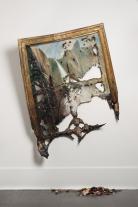 Tugend, Alina. (2019, March 19). Can Art Save the Planet? Retrieved from https://www.nytimes.com/2019/03/12/arts/art-climate-change.html Environmentalism is a social movement that is focused on protecting and conserving the environment that began in the 1960s (Lovelady). After World War II, America had a great surge in technology, consumer products, and synthetic materials which created an economic boom increasing the development of new cities resulting in pollution becoming a major concern (Lovelady). Awareness about the environmental destruction in the modern world were recognized by scientist, scholars, environmentalists and activists. (Lovelady). During this time, people began to fight for protection of their land and the beginnings of conservation measures such as the Environmental Policy Act in 1970, Clean Air and Water Act which created for a safer and environmentally friendly place (Lovelady). As technology and development have been increasing rapidly over the years, pollution and deforestation have been increasing. The destruction of the ecosystem causes negative impacts such as less biodiversity or protection of animals, and possible results of inhabitable lands, so there needs to be some sort of awareness to be spread about environmental conservation. There needs to be change in people with their lifestyles to make differences in carbon footprint or reduce waste, and we need support from individuals everywhere to help make an impact. For centuries, art has been used to raise awareness, to tell a story, and change people’s perspective on a certain cause, for example, discrimination, violence, and historically significant events. Environmental Art is no different and is meant to address environmental issues that rose in the 1960s with environmentalism (Phillips). Environmental art uses many different types of media and forms of art such as sculpture, photography, and paintings (Marks M. et al., 2017), and has a goal of informing us about nature, our eco-system and damage to the environment (Phillip). Most artists use art form to evoke emotion in people to bring awareness, and conversation to inform the viewer or reader about our ecosystem. For example, in an exhibition called Nature’s Nation: American Art and Environment in Salem, Massachusetts, a 19th century painting of “Bridal Veil Falls, Yosemite” by Albert Bierstadt is displayed next to the same painting, but instead, the painting is destroyed and is called “Fallen Bierstadt” by Valerie Hegarty (Tugend, 2019). The shocking contrast of a beautiful untouched landscape painting next to one that is destroyed with burns and rips can strike conversation about how people are impacting this earth. A foreshadowing art piece about the destruction of our environment that warns us about the need for change. In the exhibition show, “Hudson Rising” in New York, there is a chronological display of the Hudson River from the 1800s from the building of the Erie Canal to today that shows the impacts of the tourism and the climate change (Tugend, 2019). One must reflect on environmental conservation when viewing such art works. However, why use this form of media to convey a message? Is environmental art any effective in getting the message across and changing the perspectives of the viewers? Studies have shown environmental art is an effective tool in educating people about the environment. In Australia and United Kingdom, the Biosphere Reserves (BR), which is an environmental program, conducted a research to show the impacts of environmental art and education (Marks et al., 2017). Participants who were present at the festival and workshops that consisted of environmental art organized by BR were invited to complete a survey, and interviews to gauge the level of engagement, environmental attitudes, change in behavior from participating (Marks et al., 2017). The results of this experiment were that there was strong education shown because the artworks inspired dialogue and reflection, and a sense of place (Marks et al., 2017). For example, one artwork was the sculpture of the julara fish by Simon and Adrienne McVerry, and a workshop with the artists help educate the importance of the fish in the lake ecosystem and using materials that are natural and eco-friendly (Marks et al, 2017). The results of the workshops showed that the participants would use natural materials for art, they understood more about the lakes and the ecosystem, and helped people to question their own relationship with the environment and make positive changes. This is an example of “art influencing life” as Oscar Wilde mentions in “The Decay of Lying”. Environmental art attracts people and create a sense of place and attachment which in turn influences people to change their perspectives from reflection. Using the beauty of the arts to attract people and create a stronger connection from emotional response such as passion and appreciation of nature from the active engagement. Environmental art is using the aesthetic to change perception of the viewer. To raise awareness through art and evoke emotion. In Oscar Wilde’s the “Decay of Lying”, using “lying” or art to spread awareness is an effective way to gain the empathy of others to hope for change. Although its not realistic that pollution and destruction of land would cause such a drastic response such as the “Fallen Bierstadt” by Valerie Hegarty, it does evoke strong emotion and reflection to make people be aware on how they can change their day to day lives to protect the environment which in the end will most likely bring change to us. The use of aestheticism to change perception has been used for centuries, such as Oscar Wilde’s “Redding Gaol” poem to elicit emotion and empathy for bring awareness on the horrible prison system and bring possible reform. Art opens dialogue or discussion that hopefully influences the perspective to people by bringing awareness in such a beautiful way. References Lovelady, Dana M.. Environmentalism. Retrieved from https://www.learningtogive.org/resources/environmentalism Marks M, Chandler L, & Baldwin C. (2017) Environmental art as an innovative medium for environmental education in Biosphere Reserves. Environmental Education Research https://www.tandfonline.com/doi/full/10.1080/13504622.2016.1214864?needAccess=true Phillips, Renee. What is Environmental Art? Retrieved from https://www.healing-power-of-art.org/what-is-environmental-art/ Tugend, Alina. (2019, March 19). Can Art Save the Planet? Retrieved from https://www.nytimes.com/2019/03/12/arts/art-climate-change.html
|
Grace Chong | ||
| The start of the month Spring 1992 to The start of the month Winter 2020 |
Sailor Moon 90s Anime Aesthetics and Today’s Pop Culture
Bishoujo Senshi Sailor Moon (美少女戦士セーラームーン), or better known in the west, Sailor Moon is a Japanese Manga series written and illustrated by Naoko Takeuchi in 1991. The story follows main character and female protagonist, Usagi Tsukino, a bubbly and clumsy 14 year old Japanese student who one day finds a talking cat who warns her of enemies targeting Earth, so would start the adventure of Usagi becoming a Sailor Scout with her friends to save the Earth and the World (VIZ). This anime series would then influence fashion, clothing, and pop culture for generations to come. The original anime run of Sailor Moon was premiered in Japan on March 7, 1992 and later internationally. The Sailor Moon anime would then inspire decades and generations of kids to wanting to be a Sailor Scout and also leading a huge modern resurgence of retro pop culture aesthetics with themes such as: first love, Astrology, the personification of celestial bodies, Female empowerment, and the one of the very first main stream animes that covered, supported, and addressed LGBTQA+ themes. The color palette for the entire series consisted of beautiful and dreamy watercolor artwork that emphasized on the magical and romantic nature of being a Sailor Scout and definitely the feeling of first love under the moon and stars. Thus, the colors heavily used in the anime were soft yet vibrant blues, purples, and plenty of pink. One of the most iconic scenes in the anime is the Sailor Moon Transformation which encompasses the pure essence of the Sailor Moon Anime Aesthetic. The transformation scene had it all: pink ribbon, glitter, stars, pastels, hearts, and magical girl romance. It is not a stretch to say that this magical girl transformation scene became the standard for all Magical Girl animes afterwards in the on coming decades all the way until now, as seen in other popular animes like Cardcaptor Sakura in 1996, Tokyo Mew Mew in 2000, and many more magical series targeted at children and girls to which they have also inspired these children to adopt this aesthetic years later as Sailor Moon has been a long standing pop culture icon around the world. This iconic anime scene has also inspired and was referenced in western media as well. For example, in Steven Universe as Ringo went through a similar transformation sequence in Garnet’s Universe (Cartoon Network 2014) and in Star Vs. The Forces of Evil where Mina Loveberry (Disney 2016) sports the twin space buns and a nod to Usagi with bunny earrings (Usagi meaning rabbit in Japanese.) Moving on to Sailor Moon’s pop culture influence in fashion and clothing, since Sailor Moon was set in the ‘90s, plenty outfits that the characters sport are very trendy like high waisted skirts and pants, pastels, and denim jackets (TeenVogue 2020). Sailor Moon is so intrinsic to ‘90s style and vice versa, people on the internet now have been labeling the fashion movement as ‘90s Anime Aesthetic. Of course, there are plenty of amazing animes during the ‘90s, but nothing quite stuck to the realm of fashion and culture like Sailor Moon has. The way characters chose to dress sent a clear message that girls can be as masculine or feminine as they want to be, and that while crime fighting, the Sailor Scouts can definitely looks cute but have the power to take down evil criminals. Not only that, Sailor Moon influence in fashion has come back in present times as merchandise, cosplay, and a retro/aesthetic movement for teenagers and young adults now embrace, especially with high waisted but roomy mom jeans, a tucked in tee, and maybe sporting Usagi’s famous twin Space buns which where lovingly referred to her. Recently, ColourPop, a LA based make up company just recently created a Sailor Moon inspired make up line which has been sold out 3 times so far in less than 1 hour every time. Thus, it’s easy to see that women are still huge fans of Sailor Moon way after the ‘90s anime has ended. In all, Sailor Moon has pioneered an entire genre of animation with their famous and magical transformation scene, lead a fashion aesthetic movement far after the series has ended with merchandise still being sold out within and hour, and still empowering all who enjoy and love the franchise as the anime will forever be a pop culture icon in the eyes of millions. Sailor Moon is now and for the foreseeable future, be a famous household name that will continue to influence fashion, aesthetics, animation genres, and people.
Citations: VIZ Media. (n.d.). VIZ: The Official Website for Sailor Moon. Retrieved October 10, 2020, from https://www.viz.com/sailor-moon Disney. (n.d.). Watch Star vs. the Forces of Evil: Disney+ Season 2, Episode 9. Retrieved October 10, 2020, from https://www.disneyplus.com/series/star-vs-the-forces-of-evil/3dinruRQMph5 Johnson, V., Williamson, S., Nesvig, K., Li, M., & Delgado, K. (2020, April 28). Why Are We All So Obsessed With Sailor Moon? Retrieved October 10, 2020, from https://www.teenvogue.com/story/brief-history-of-sailor-moon-fashion-beauty Hulu. (n.d.). Steven Universe. Retrieved October 10, 2020, from https://www.hulu.com/series/steven-universe-73e1e605-f760-470c-9a58-0148... ColourPOP. (n.d.). Sailor Moon x Colourpop Collection. Retrieved October 10, 2020, from https://colourpop.com/products/sailor-moon-makeup-collection |
Nancy Ho |





